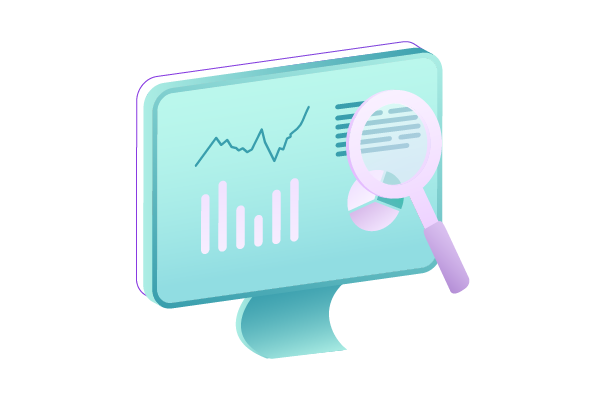
A significant, yet complex, task is for macro analysts to analyze, predict and explain the impact and implications by many economic scenarios to multiple global financial markets in today’s fast-paced and changing environment.
They, the specialists, who are careful in studying the intricate entanglements of forces affecting both entire economies and financial systems, can be described as the builders of economy and the financial landscape as such. This is a comprehensive study of macro analysts. We will delve into their key functions, approaches, and why it matters greatly.
What Does a Macro Analyst Do?

Macro analyst is a key character who fulfills multiple roles and functions. Such experts are entrusted with searching through macro-economic indicators and trends. This comprises various functions making the basis for our financial understanding. Let’s explore these key responsibilities in greater detail:
– Economic Analysis
Therefore, macro analysts are like economic detectives who comb through lots of information so as to establish the economic condition of a country or region. They examine the wide variety of economic factors such as GDP, inflation rate, employment levels, etc. The practice can help measure the economic health in general.
Yet, such things as the work of economists is not confined to numbers but penetrates into the secrets of fiscal as well as monetary policy. They decode on what effect on the economic system does decision of the government that concerns alteration in tax rates and rates of interests. Such comprehensive analysis portrays an entire picture of economical affairs revealing the crucial considerations which policy maker, entrepreneurs and investors have in mind as they make their choices.
– Market Research
Around financial markets, the macro analysts must observe and record what is happening in them. They keep a close eye on the ups and downs of different assets such as stocks, bonds, currencies and other commodities. However, it goes way beyond quantitative data. This is in a bid to discover the forces that influence the markets to bring to light the hidden connection between macroeconomic changes and asset prices.
Some of these studies involve exploring how economic indicators can change or impact stock price and why political events have an effect on currencies. These viewpoints shed light on how different groups perceive the dynamics influencing asset pricing.
– Global Trends
Today macro analysts are operating beyond their domestic boundaries within a globalized environment. They are always in the front row understanding the deep impact that international factors have. They involve geopolitical matters, trade relations and global economy dynamics.
Mostly, such factors may assume tremendous dimensions at the local or worldwide level. For example, a trade dispute between important countries can interrupts the supply chain and it has an negative effect on the global economic growth. Therefore, the macro analyst reaches beyond the domestic problems and functions as a translator of the international economy processes.
Also Read: Who are Market Makers? Understanding Their Role
– Risk Assessment
Likewise, financial detectives who are known as macro analysts have the responsibility of finding possible dangers and deficiencies in the financial environment. The financial markets are intrinsically volatile, full of uncertainties. They are supposed to anticipate possible obstacles to avoid their occurrence.
They foresee these economic downturns and financial crises which is what makes them so prescient. By so doing, they act as protectors of financial stability with regards to investors’ interests, business interests, and the overall economy.
– Investment Strategy
In the realm of investments, macro analysts are not passive observers; instead, they engage in decision-making on investment strategies. For professional investors, their broad knowledge of the economic setting is like unique. They advise people in their decision making on how much assets to hold, what mix of diversified assets to employ and how to minimize risks associated with investment decision making process.
For example, they might suggest adopting a lower-risk strategy in times of predicted economic volatility to manage the situation. The custodians have the skills required to analyze macroeconomic factors and they guide in the financial market storms together with investment strategies.
Macro Analysts Methods

Analysts who study different macroeconomic aspects can be compared to artisans equipped with sophisticated equipment — this set has numerous instruments and techniques enabling such specialists to fulfill their professional obligations accurately and competently.
It contains basic analysis as well as going down to the real substance of driving forces that move markets; such as rates of interest and firms’ gross income. However, at the same time, they use qualitative analysis filtering out non-numerical data like political stability, social trends and technology upgrading. It therefore empowers them with necessary skills for detecting complexities behind global finance. This is vital considering that they play an important role in our financial world. Here, we delve into these methodologies, shedding light on how they contribute to the comprehensive understanding of the economic landscape:
1. Data Analysis
Data analysis is a vital tool for macro analysts. These professionals use statistical methods to delve into economic and financial information. By carefully examining large amounts of data, they aim to identify meaningful patterns or anomalies.
This thorough analysis forms the basis for their economic narratives, which are rooted in a data-driven approach. Their insights and predictions are not mere guesswork but are supported by empirical evidence.
2. Scenario Analysis
Macro analysts know that the future is full of unknowns. They do continuous scenario analysis so as to steer through the maze of probable results. It entails simulating several virtual situations representing many economic occurrences and amendments to government policies.
They simulate various economic pathways which give them insights into the consequences and in turn equip them with strategic tool kit for the likely outcomes. Through such “what if” drills they emerge as lighthouses lighting up the stormy waters or ocean of financial market.
3. Fundamental Analysis
Macro analysts have to understand how financial market works. They try to understand what drives the change in the general price of assets. These elements are stringently tested for interest rates, corporate earnings, and economic growth.
They have an innate appreciation how it is through understanding this that they can easily maneuver in financial marketplace. This approach goes beyond simply looking at what is on the surface and actually gets to the heart of dynamics within the markets.
4. Qualitative Analysis
Macro analysis appreciates the subtlety brought about by the nonnumerical elements in numbers are just a part of the story. These go outside statistical analysis to look at non-quantifiable issues such as politics, society, and technology trends.
Although some may seem unseen and challenging, they reveal a wealth of information on long term economic transition. This union between quantitative and qualitative analysis makes macro analysts to have a total impression about an economical portrait.
The Significance as Macro Analysts

Macro analysts are vital to the world in many ways. Their job contributes to the economic well-being of nations, stability of global markets, and helps us understand finances. It’s like they’ve built a map of the economy and are guiding us through it. Here’s why:
– Risk Mitigation
Economic uncertainties can turn everyday life on its head. But macro analysts stop that from happening. They can pick out potential risks and vulnerabilities in financial systems as if they were neon green on a black background. This means that they can detect risks from things like economic downturns, market fluctuations, and even financial crises before anyone else can.
They do this through rigorous analysis, which allows them to offer early warning signs — this lets investors make smarter decisions when putting their money into something. For example, if they notice a recession coming based on economic indicators and trends, they’ll tell everyone to move their investments around so that there’s less exposure to riskier assets. Not only does this keep assets safe but it also helps prevent broader systemic risks that can cause financial instability.
– Merging & Complex Financial Environment
The financial market has become a complex and interconnected place. As a result of this, those who give out advice as to what decisions you should make with your money have become incredibly valuable. This is where macro analysts come in. Investors, policymakers, and business leaders all squeeze the minds of these people to come up with good strategies and informed decisions.
For investors, they help choose which assets to put their money into, diversify their portfolio for stability, and manage any risks that may arise. Policymakers use it to create economic policies like adjusting interest rates or fiscal measures that help improve the nation’s economy. Business leaders need them to determine how they should alter their company strategy based on trends in the global economy. Simply put, the analysis these professionals do provides a foundation that supports decision-making in a world where constant change is normal.
Also Read: Market Making 101: Strategies for Efficient Trading
– Development of Economic Policy
In their pursuit to make the country as economically strong as possible, the government and central banks use macro analysis to create economic policies. This could be anything from tax reforms to spending decisions. The implications of these choices ripple through the entire country. Policymakers can better steer the economy when they understand all the outcomes that will come from their choices.
For example, if there’s too much inflation in the market, they can switch up interest rates by using macroeconomic analysis to find price stability. What they do affects citizen livelihoods and overall stability.
4. Market Efficiency
Financial markets need to be efficient in order for them to work well. Gatekeeping this efficiency is macro analysts who offer accurate and up-to-date information for investors and traders. These insights are what makes financial decision-making possible. Investors rely on macroeconomic data and analyses in order for their capital allocation to be intelligent enough to respond to opportunities and risks in real time.
Traders leverage these insights too, so that they can make fast decisions on whether or not an asset should be bought or sold. A well-informed and efficient market not only ensures fair pricing but also fosters trust and confidence among market participants, thus maintaining the integrity and stability of the financial system.
Conclusion
Macroeconomic analysts are indispensable in the field of finance. They offer valuable insights into the intricate relationship between economic factors and market dynamics. Their responsibilities are broad, spanning various sectors, and their recommendations carry weight for government policymakers, business executives, investors, and individuals alike. By providing guidance on risk management, shaping investment strategies, and influencing economic policies, macro analysts play a crucial role in decision-making processes.
Risk assessment and mitigation are also a crucial aspect of their role. You can think of them as vigilant guards who proactively spot potential risks and vulnerabilities within the financial system. Their goal is to prevent anything bad from happening to the economy or markets. They’re like firefighters in that way because just like how those guys try to put out fires before it gets worse, macro analysts do the same thing with economics.
Macro analysts play a crucial role in the complex world of investments. Their deep understanding of economic indicators, market trends, and global dynamics serves as a guiding light for investment strategies. From determining asset allocation and portfolio diversification to managing risks, their insights shape investment decisions for individual portfolios and institutional investments alike. In today’s interconnected global landscape, macro analysts provide a holistic perspective on the intricate workings of the world economy. They bridge the gap between local and global economic currents, helping individuals and institutions navigate the complexities of global finance. By anticipating how economic shifts in one region can impact others, they promote a comprehensive awareness of the global economy.
Disclaimer: The information provided by Quant Matter in this article is intended for general informational purposes and does not reflect the company’s opinion. It is not intended as investment advice or a recommendation. Readers are strongly advised to conduct their own thorough research and consult with a qualified financial advisor before making any financial decisions.

I craft stories that make complex ideas clear. I simplify the blend of data science, machine learning, and crypto trading, showcasing how advanced tech and quantitative models analyze data for informed trading choices. Join me in exploring the realm of quantitative trading, where my narratives make intricate concepts easy to grasp.
- Alifia Berizkyhttps://quantmatter.com/author/alifia-berizky/
- Alifia Berizkyhttps://quantmatter.com/author/alifia-berizky/
- Alifia Berizkyhttps://quantmatter.com/author/alifia-berizky/
- Alifia Berizkyhttps://quantmatter.com/author/alifia-berizky/
